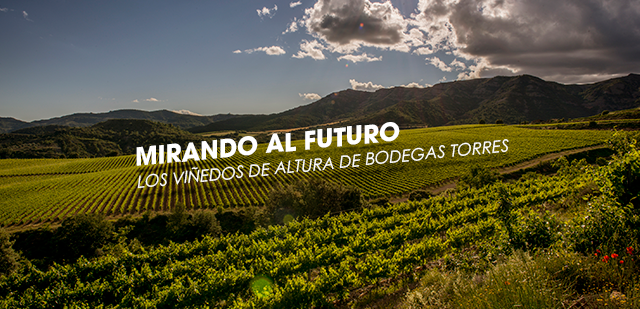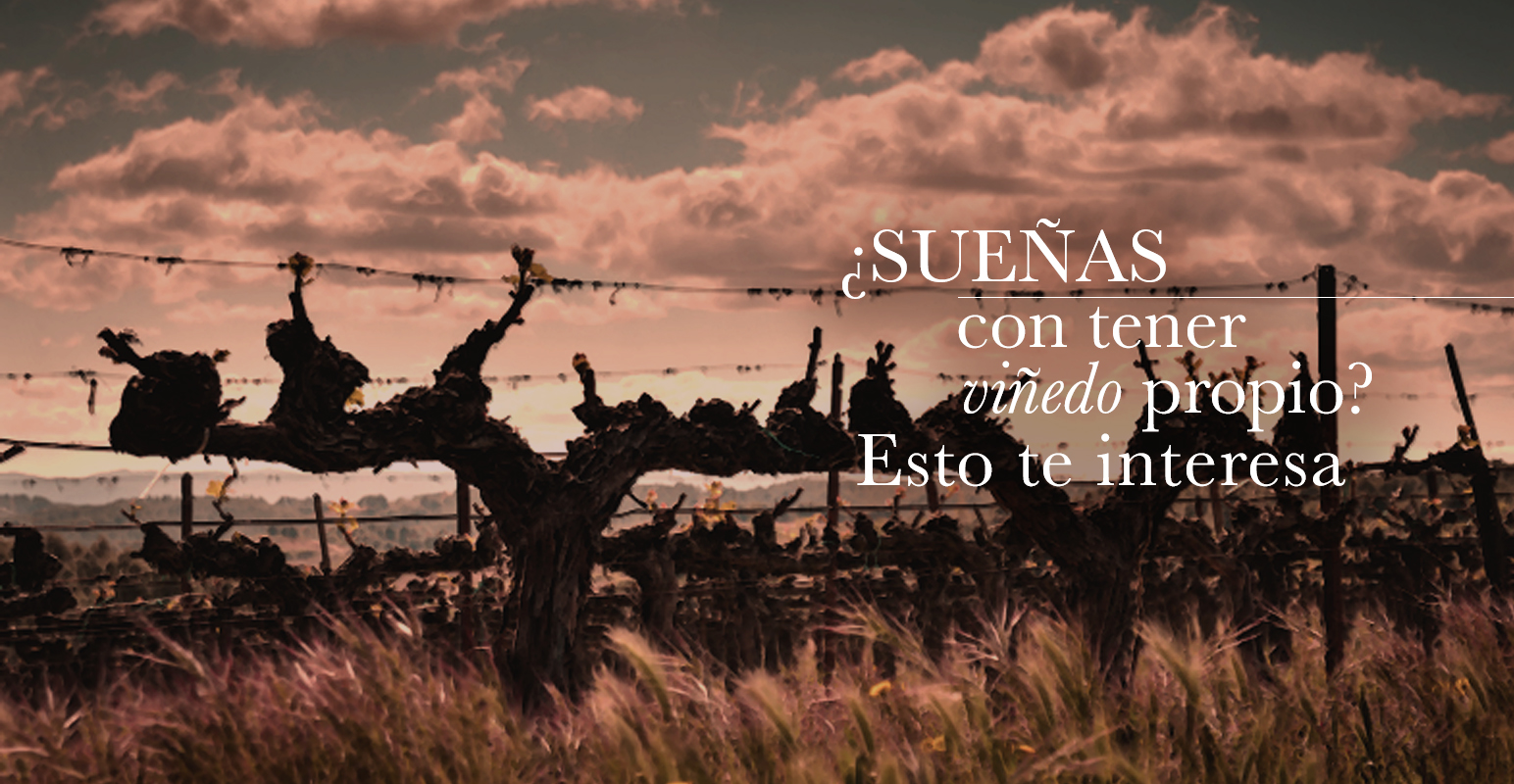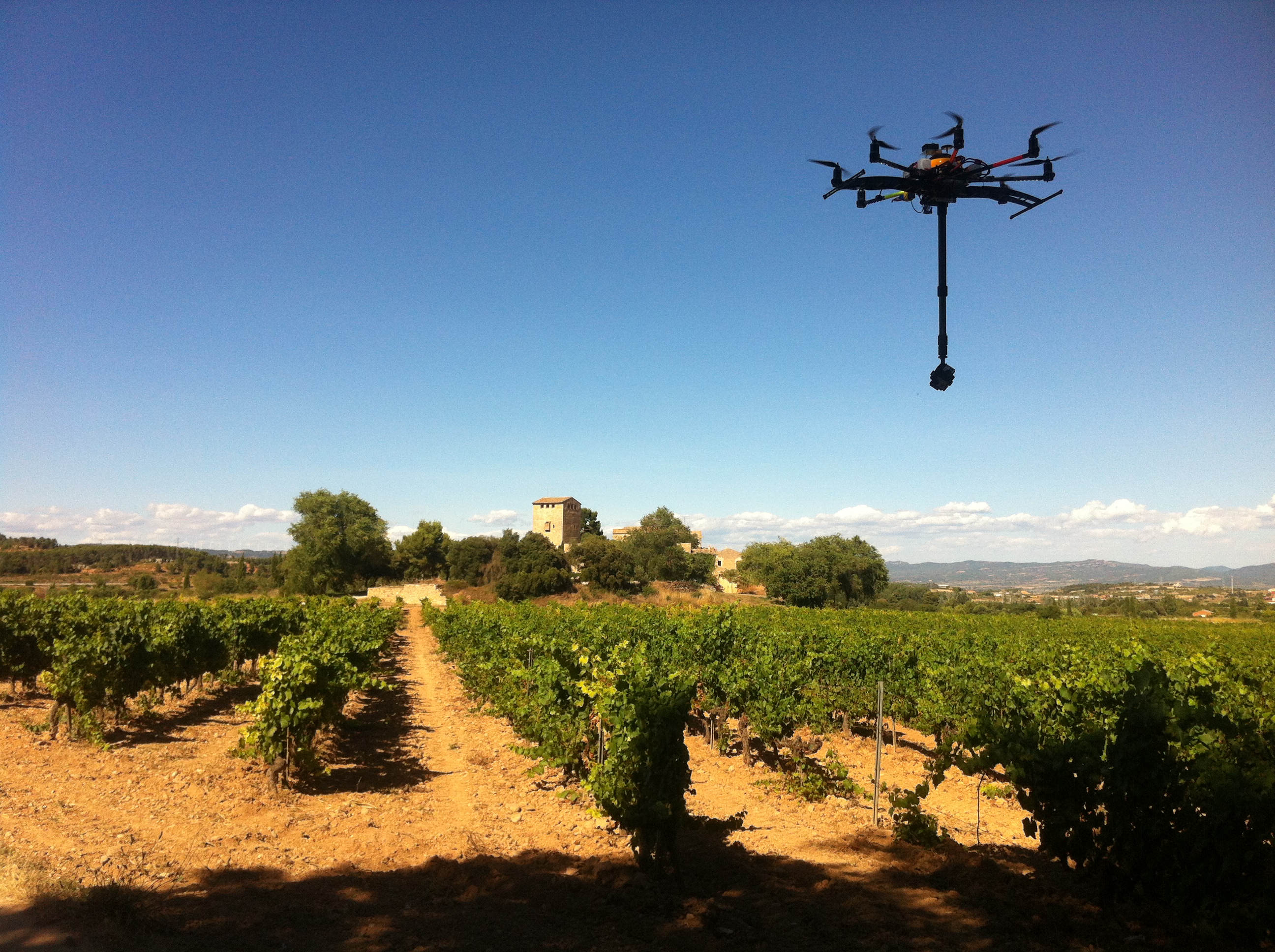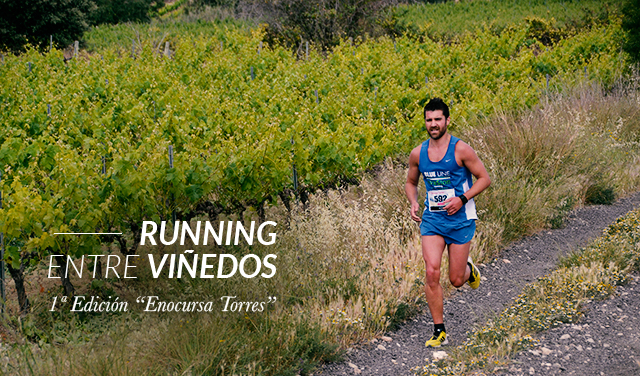LOOKING TO THE FUTURE

The changing climate reality is a decisive factor that directly impacts the development of the vine. The continual rise in temperature affects the plant on a physiological level, making it particularly vulnerable during fruit maturation.
The berries quickly reach high sugar concentrations whereas the skins and seeds mature at a slower pace. This can lead to unbalanced wines with significantly higher alcohol content as well as unripe tannins, which make a decisive difference in the wine's quality and potential to mature.
High temperatures also increase pH levels in the grape, thus reducing acidity and making wines age faster.
Given this new climate reality, Miguel A. Torres is convinced that “winegrowing needs to adapt to new climatic circumstances, moving vineyards north in search of higher elevations and cooler temperatures. This is what we have been doing at Bodegas Torres for the past 20 years. For example, we bought land at 1200 meters in the foothills of the Pyrenees. At this time, it is impossible to grow grapes there, but we are convinced that in the future this new setting will provide an immense opportunity for certain varieties.”
As part of the adaptive measures set forth in Torres & Earth, the winery is seeking solutions such as working with varieties that are resistant to drought and various pests (the project to recover ancestral varieties plays a key role here), as well as reimagining the future map of varieties, looking north and moving vineyards to higher elevations.
Generally speaking, the higher the altitude, the lower the average temperature, especially at night, a factor which makes it possible to grow grapes at otherwise impossible latitudes, including near the equator. Shifts in daytime and nighttime temperature are particularly beneficial to varieties with lower aromatic intensity (Pinot Noir, for example), helping to preserve their subtle and delicate fragrance.
And so Bodegas Torres looks to the future and heads north, venturing to new heights and adapting to a new climate reality—which is already upon us—by growing grapes at over 500 meters above sea level.
Tremp
Sant Miquel Vineyards
The 104 hectares under vine in Sant Miquel, Tremp, are located at the foot of the Catalan Pyrenees, at an elevation of 850 meters above sea level, and belong to the Costers del Segre Appellation of Origin. The vineyards are planted with red varieties like Cabernet Franc, Merlot and Pinot Noir, as well as Chardonnay.[[{"fid":"8429","view_mode":"default","fields":{"format":"default","field_file_image_alt_text[und][0][value]":false,"field_file_image_title_text[und][0][value]":false},"type":"media","link_text":null,"attributes":{"height":586,"width":835,"class":"media-element file-default"}}]]Sant Miquel Vineyards, Tremp
Santa Maria de Miralles
Fransola Estate
The Fransola Vineyard lies within the municipal area of Santa Maria de Miralles. The vineyard comprises 25 hectares of Sauvignon Blanc, grown at a height of 550 meters, which is used for Fransola, one of the winery's most elegant and complex whites.[[{"fid":"8430","view_mode":"default","fields":{"format":"default","field_file_image_alt_text[und][0][value]":false,"field_file_image_title_text[und][0][value]":false},"type":"media","link_text":null,"attributes":{"height":606,"width":875,"class":"media-element file-default"}}]]Fransola Estate, Santa Maria de Miralles
Mas Borràs Estate
The Alt Penedès shares its climatic virtues with this 10-hectare Pinot Noir vineyard, which produces its exceptional namesake wine, Mas Borràs. The secret to successfully growing this delicate variety is to forego high-volume harvests and keep crop loads relatively low.
[[{"fid":"8431","view_mode":"default","fields":{"format":"default","field_file_image_alt_text[und][0][value]":false,"field_file_image_title_text[und][0][value]":false},"type":"media","link_text":null,"attributes":{"height":603,"width":866,"class":"media-element file-default"}}]]Mas Borràs Estate, Santa Maria de Miralles
Waltraud Vineyards
The winery's Riesling vineyards extend across 195 hectares in the Alt Penedès, also at 550 meters above sea level. The grapes that give us the gold and honeyed WaltraudRiesling originate here.
[[{"fid":"8432","view_mode":"default","fields":{"format":"default","field_file_image_alt_text[und][0][value]":false,"field_file_image_title_text[und][0][value]":false},"type":"media","link_text":null,"attributes":{"height":576,"width":882,"class":"media-element file-default"}}]]Waltraud Vineyards, SantaMaria de Miralles
Mediona
Les Arnes Estate
In the highlands of the Alt Penedès, a 12th-century Romanesque chapel overlooks a tiny 2-hectare parcel: the Santa Maria d'Agulladolç vineyard, home to the international red varieties par excellence—Cabernet Franc, Merlot and Cabernet Sauvignon—that are grown in select quantities to produce the iconic Reserva Real wine.
[[{"fid":"8434","view_mode":"default","fields":{"format":"default","field_file_image_alt_text[und][0][value]":false,"field_file_image_title_text[und][0][value]":false},"type":"media","link_text":null,"attributes":{"height":364,"width":787,"class":"media-element file-default"}}]]Les Arnes Estate, Mediona
We will keep looking north in search of high-lying areas, assembling a new varietal map as a way of adapting to the consequences of rapid and potentially devastating climate change.



